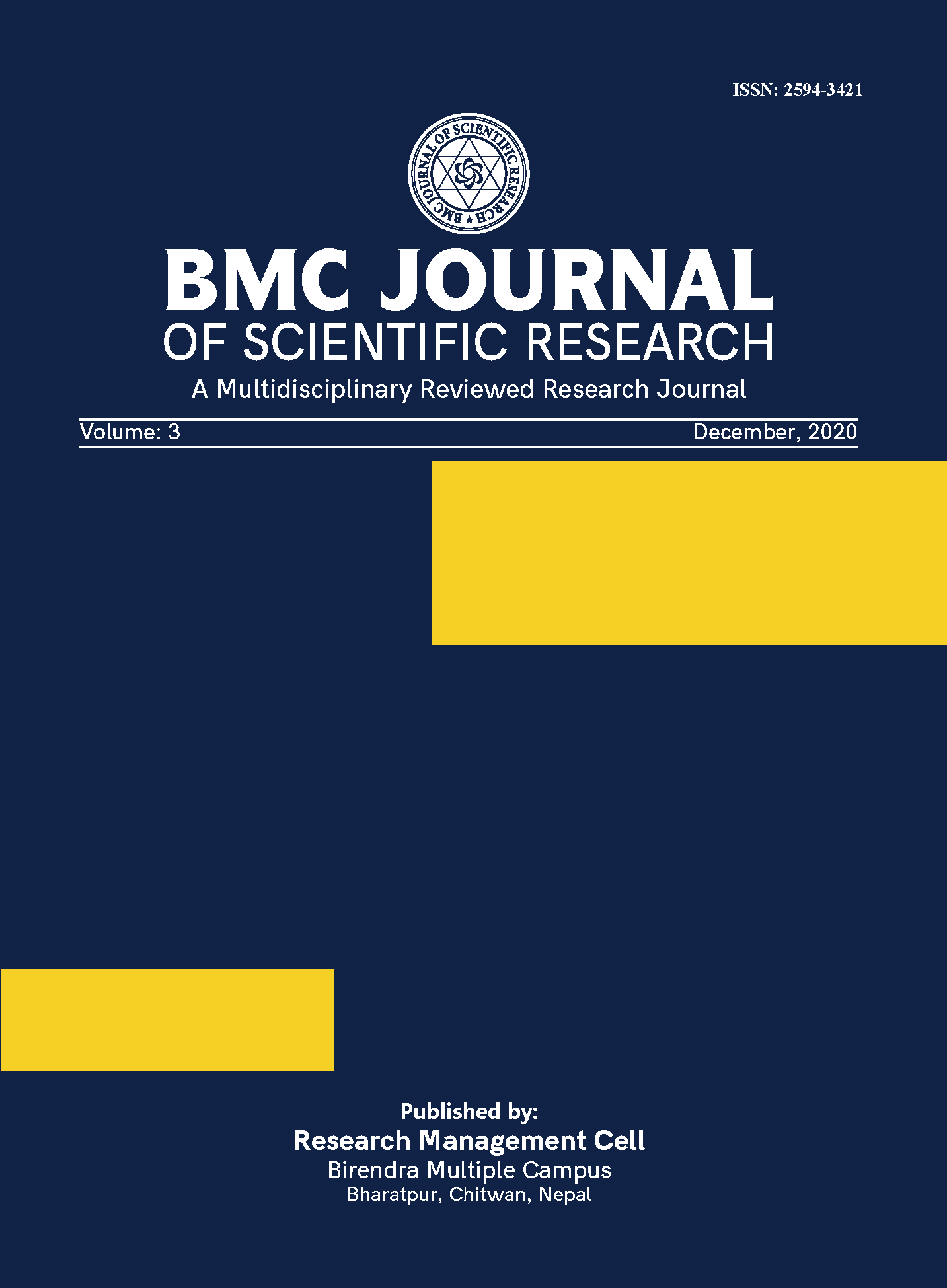The Effectiveness of the Policy to Bring Parity in Education between Dalit and non-Dalit in Nepal
DOI:
https://doi.org/10.3126/bmcjsr.v3i1.40178Keywords:
Dalit and non-Dalit, Policy Effectiveness, Parity in Education, Learning Environment, NepalAbstract
This article by comparing achievement scores claims that Dalit is equal to non-Dalit despite millennium- long discriminations and suppression. The study was initiated with the common assumption of “the status of learning and learning supporting environment of Dalit students are lower than of the non-Dalit” because of their deprivation of social dignity and culture of silence, and economic poverty. Trends analysis of score across 2004, 2009, and 2015 of the students (N=440) in six different public schools in Gorkha district, and measuring the status of the learning environment- motivation, awareness, investment to education, and indiscrimination in school, for Dalit students (N=42) of three public schools at district headquarters of Gorkha who attempted SLC exam of 2016, through their self-rating on provided opinionnaire form suggest that learning environment for Dalit students is moderately supportive and they have made significant progress in education. Increasing in achievement score and enrollment of Dalit students despite no increase in the educational quality of public schools over 11 years indicates the effectiveness of policies formulated by the state to uplift Dalit in Nepal.
Downloads
Downloads
Published
How to Cite
Issue
Section
License
Copyright (c) 2020 Research Management Cell, Birendra Multiple Campus

This work is licensed under a Creative Commons Attribution-NonCommercial-ShareAlike 4.0 International License.




